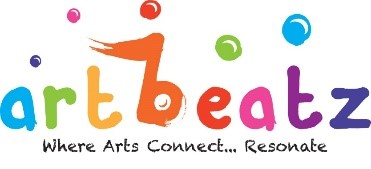Understanding the Characteristics of Collaborative Knowing
In today’s significantly interconnected world, the ability to function collaboratively is a vital skill. As conventional academic standards develop to meet the needs of the 21st century, joint learning emerges as a crucial principle. This short article explores the intricacies of collaborative discovering, discovering its advantages, approaches, and difficulties, while offering understandings into just how it forms modern education and learning.
Collaborative learning exceeds merely interacting.
It symbolizes an academic approach where people take part in a cumulative effort to acquire expertise, fix problems, and accomplish a common objective. This approach emphasizes the value of variety in thought and fosters deeper understanding via communication and shared experience.
The Benefits of Collaborative Discovering
Joint understanding supplies a myriad of benefits, making it a preferred approach in instructional settings across the globe. Among the primary benefits is the enhancement of critical assuming abilities. As learners engage with peers, they are exposed to different point of views, urging them to evaluate and assess information more seriously.
An additional significant advantage is the renovation in interaction skills. Collaborative discovering environments require active listening, articulate expression of ideas, and considerate discussion. These abilities are very useful, not just academically, but in professional and social contexts as well.
Cognitive advancement is likewise significantly reinforced through joint efforts. Working together calls for learners to express their thinking, difficulty presumptions, and integrate different point of views, leading to much deeper cognitive processing and retention.
- Improved vital believing
- Improved communication skills
- Raised cognitive advancement
- Higher retention rates
- Cultivating of social and leadership abilities
The advancing impact of these advantages is a more alternative instructional experience. Learners not just get understanding however likewise develop vital life skills that prepare them for future joint undertakings in any area.
Strategies for Effective Collaborative Learning
Carrying out joint learning efficiently requires thoughtful strategy and preparation.

Educators has to produce an atmosphere for cooperation, where learners feel risk-free and motivated to take part openly. Below are some strategies that can facilitate successful joint understanding experiences.
First of all, developing clear objectives and assumptions is paramount. When learners comprehend the objectives and their functions within the team, they are most likely to involve meaningfully. Educators needs to communicate these purposes clearly and guarantee they are lined up with the educational program.
Secondly, using varied group structures can enhance the learning experience. By varying team composition, whether by ability degree, passion, or background, teachers can promote dynamic communications and an extra thorough understanding of the material.
Obstacles in Collaborative Learning
While collaborative learning uses countless benefits, it is not without its challenges. One typical issue is the variation in group member engagement. Some individuals might dominate conversations, while others may be much less likely to edtech platform add, resulting in an inequality in the knowing experience.
- Inconsonant degrees of involvement
- Prospective for conflict
- Time monitoring troubles
- Diverse degrees of commitment
Furthermore, disputes can emerge as a result of varying point of views, working styles, or misunderstandings. Educators should be equipped to handle these conflicts effectively, promoting an environment where respectful discussion dominates.
The Function of Modern Technology in Collaborative Discovering
In the electronic age, modern technology plays a crucial role in promoting joint learning. Online systems damage geographical obstacles, permitting individuals from varied places to team up in genuine time. These tools use a wide range of features that improve collective efforts, from shared files and discussion online forums to virtual conference spaces.

Technology not only widens the extent of who can join collective learning however also improves the high quality of interaction. Learners can access a bigger variety of sources, engage with interactive material, and apply their knowledge in cutting-edge means.
Future of Collaborative Discovering
Looking ahead, the future of collaborative discovering shows up encouraging. As universities remain to welcome innovation and introduce pedagogical methods, partnership will likely end up being a keystone of discovering experiences at all levels of education.
Ultimately, the essence of collaborative learning lies in its ability to encourage individuals via shared initiative and mutual understanding. As we move forward, growing these experiences will be crucial in preparing learners not simply to prosper academically, but to flourish in a complicated, interconnected globe.


